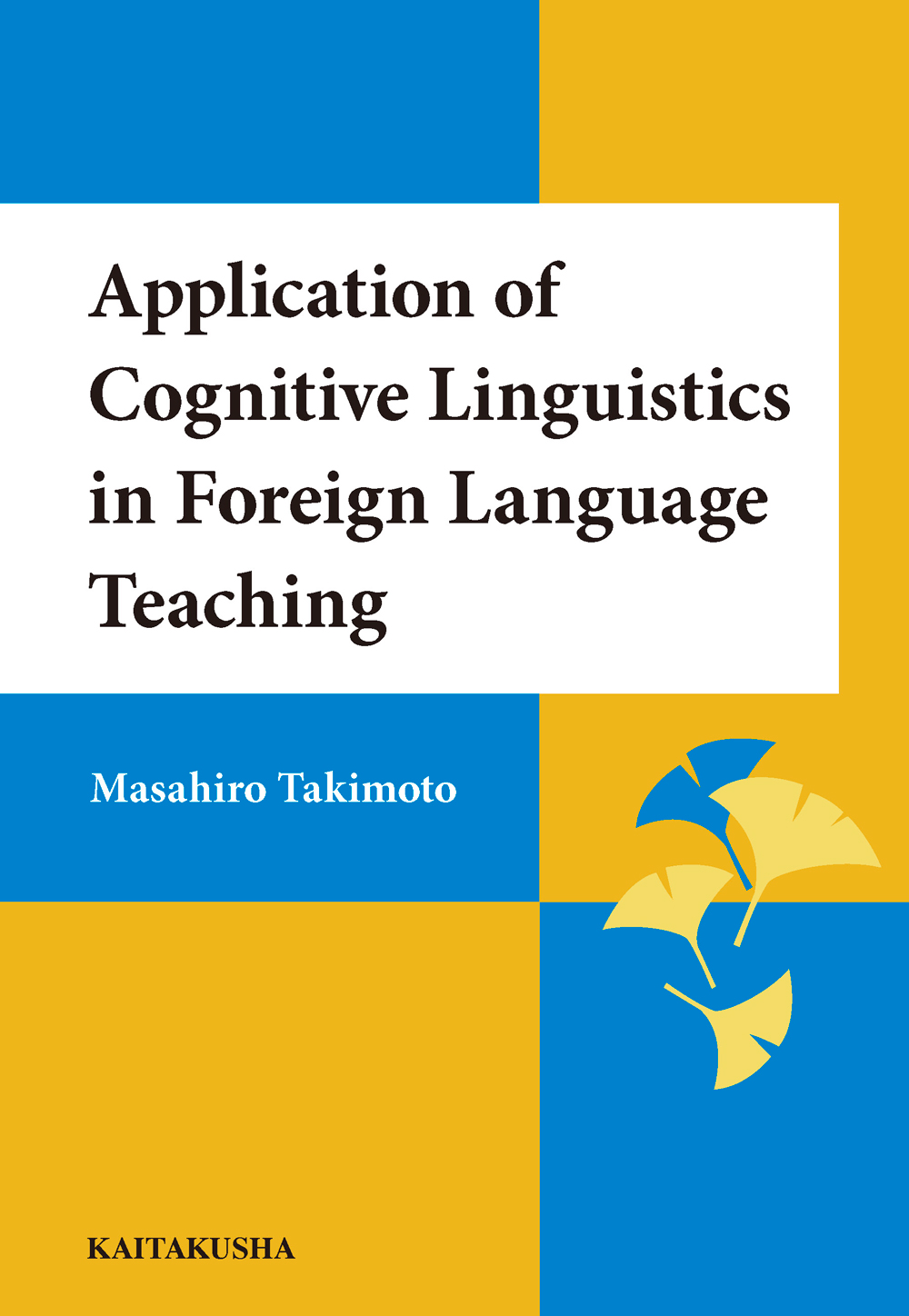
Title
Application of Cognitive Linguistics in Foreign Language Teaching
Size
204 pages
Language
English
Released
February 27, 2020
ISBN
978-4-7589-2281-4
Published by
Kaitakusha
Book Info
See Book Availability at Library
Application of Cognitive Linguistics in Foreign Language Teaching
Japanese Page
The present study was motivated by theoretical considerations in cognitive linguistics connected with the conceptual projection and the metaphorical idea of certainty degree is distance along a path, applying them to develop Japanese learners’ knowledge of the different degrees of certainty attached to boosters and hedges, including certain, probable, and possible items. Previous studies discovered that Japanese students learning English as a foreign language had greater difficulty in identifying and categorizing the roles of the probable and possible items and misapprehended their meanings.
The present study attempted to use the proximal-distal metaphor as a mnemonic device involving three different items, namely certain, probable, and possible items, to indicate three degrees of certainty. Furthermore, all previous studies adopted teacher-directed approaches. Today, computers in classrooms can serve as electronic devices to allow students to access the Internet to research, create, and complete their work, which enhances self-directed learning and allows the creation of a wider variety of individualized lessons. Self-directed learning on computers has received little attention and remains relatively understudied in cognitive science. However, recent studies have shown its effectiveness, particularly in conceptual understanding in higher education. It is, therefore, worthwhile to examine what effects self-directed metaphor awareness-raising approaches on computers might have on performance and compare them with teacher-directed methods.
The present study evaluated the relative effects that cognitive and non-cognitive approaches and self-directed and teacher-directed approaches on computers might have on performance. The cognitive approach involved concept projection (a process through which the participants understand an abstract concept), namely the degree of certainty, in terms of the spatial concept of distance, while the non-cognitive approach involved rote learning of a list of target expressions related to the degree of certainty. In the self-directed approach, the participants were able to use an online computer program in their own way, choosing the parts of the target information they wanted to learn about more and concentrating on what they wanted to study. On the other hand, in the teacher-directed approach, the instructor played the role of a lecturer. The instructor had primary control of the online computer program and adhered to the information available in the online computer program.
The results of the study demonstrated that the groups using the cognitive approach outperformed those using the non-cognitive approach and the control groups in writing, comparison, and categorization tests. The results further demonstrated that the cognitive approach is effective as a mnemonic device generating long-term memory encoding. There are two possible factors behind the effectiveness of the cognitive approach. The first factor is associated with input enhancement and the second factor is concept projection to understand an abstract concept, namely the degree of certainty in terms of distance.
The results also showed that the self-directed approaches enabled the participants to perform as well as those who used the teacher-directed approaches and the difference between self-directed and teacher-directed learning did not seem to have had a major impact on the overall performance of the self-directed and teacher-directed groups. There are two closely related reasons for the similar performance of the participants in the self-directed and teacher-directed approaches. The first involves the information that the participants received, while the second concerns the cognitive and non-cognitive strategies the participants in the self-directed and teacher-directed groups used to obtain their answers.
(Written by: TAKIMOTO Masahiro / February 22, 2021)
Table of Contents
1.1 Statement of Problem
1.2 Research Questions and Hypotheses
1.3 Definition of Terms
Chapter 2 Literature Review: Boosters and Hedges in L1 and L2
2.1 Introduction
2.2 The Concept of Metadiscourse
2.3 Overview of the Concepts of Booster and Hedge
2.4 Studies in Boosters and Hedges in L1 Academic Writing
2.5 Studies in L1 and L2 Speakers’ Awareness of Boosters and Hedges
2.6 Conclusion
Chapter 3 Literature Review: Cognitive Linguistic Approach to Learning L2
3.1 Introduction
3.2 Cognitive Linguistics
3.3 Cognitive Semantics
3.4 Cognitive Grammar and the Usage-Based Thesis
3.5 Self-directed Learning from the Cognitive Perspective
3.6 Conclusion
Chapter 4 Methodology
4.1 Introduction
4.2 Collection of Native Speakers’ Baseline Data
4.3 The Pilot Study
4.4 The Present Study
Chapter 5 Results
5.1 Introduction
5.2 Reliability and Validity
5.3 Assumptions Underlying the Data Analysis
5.4 Descriptive Statistics and Results of MANOVA and ANOVA
5.5 Effects of Treatments
5.6 Frequencies of CERTAIN, PROBABLE, and POSSIBLE ITEMS
5.7 Written Retrospective Evaluation Questionnaire
5.8 Interview Analysis
5.9 Conclusion
Chapter 6 Discussion
6.1 Introduction
6.2 Description of Treatment Features
6.3 Description of Test Features
6.4 Key Findings of the Treatment Effects
6.5 Conclusion
Chapter 7 Conclusion
7.1 Introduction
7.2 Summary of the Main Findings
7.3 Pedagogical Implications
7.4 Limitations
7.5 Future Research
Related Info
JACET Distinguished Research Award 2021 (The Japan Association of College English Teachers, Sept. 2021)
https://www.jacet.org/info/2021%e5%b9%b4%e5%ba%a6%e5%a4%a7%e5%ad%a6%e8%8b%b1%e8%aa%9e%e6%95%99%e8%82%b2%e5%ad%a6%e4%bc%9a%e8%a4%92%e8%b3%9e%ef%bc%88jacet%e8%a4%92%e8%b3%9e%ef%bc%89%e5%8f%97%e8%b3%9e%e8%80%85%e7%99%ba%e8%a1%a8/



